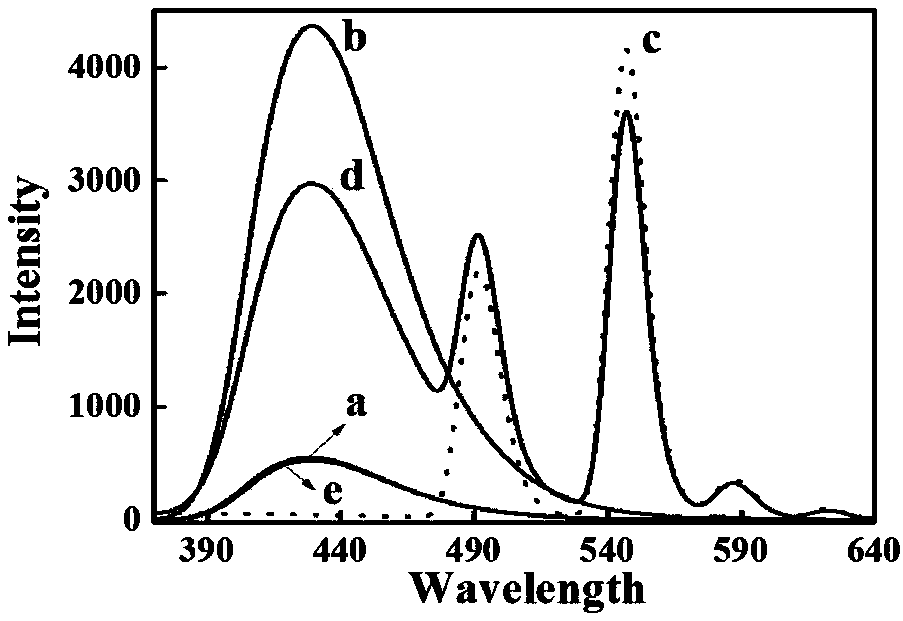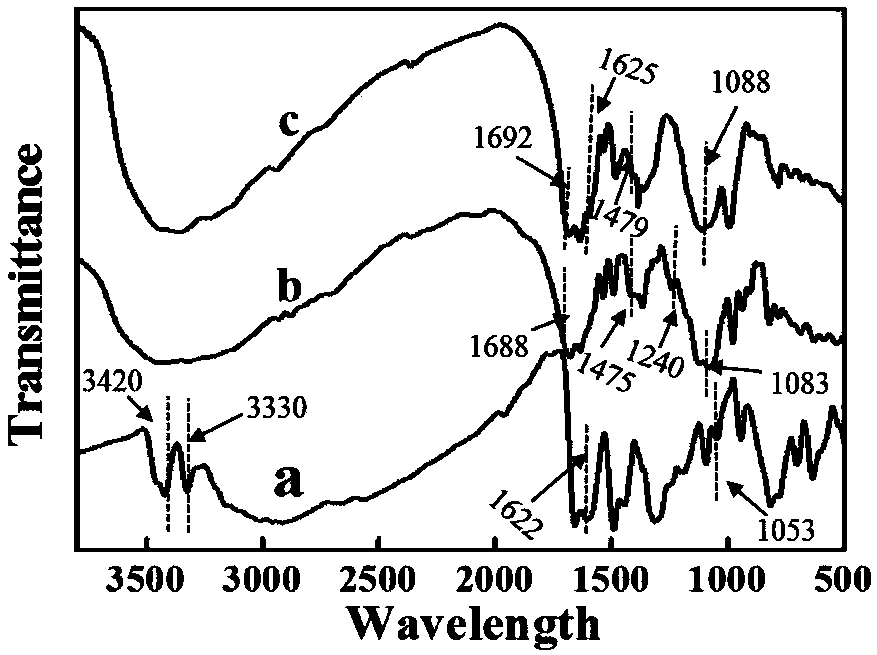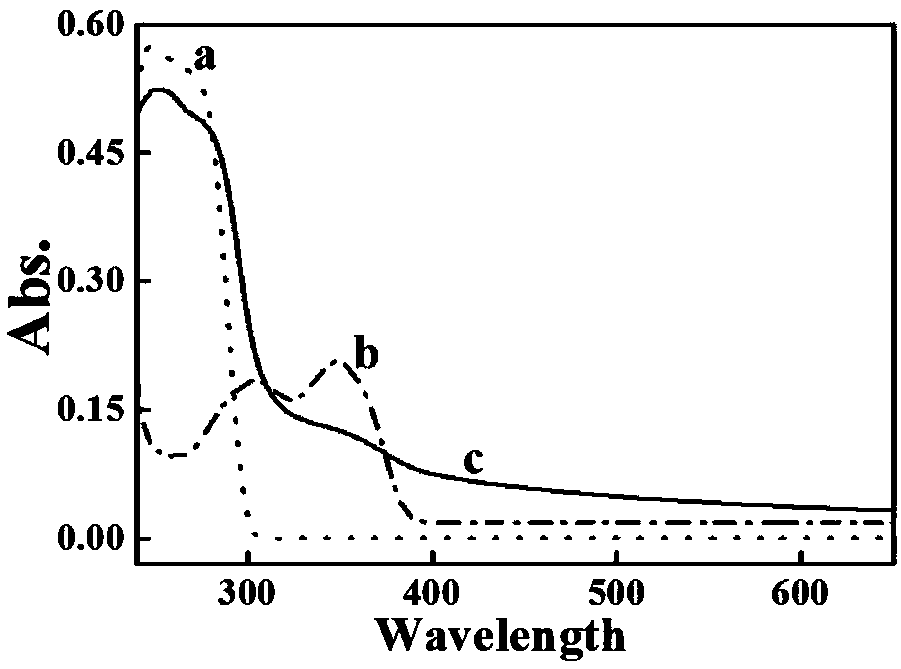Preparation method and Cu<2+> detection application of rare earth ratiometric fluorescent probe
A ratiometric fluorescent probe and ratiometric fluorescence technology, applied in the field of environmental detection, to achieve the effect of improved accuracy, high sensitivity and selective detection
- Summary
- Abstract
- Description
- Claims
- Application Information
AI Technical Summary
Problems solved by technology
Method used
Image
Examples
Embodiment 1
[0021] Preparation of luminol-Tb-GMP ratiometric fluorescent probe: Mix 40 μL of 10 mM luminol solution with 90 μL of 100 mM guanosine monophosphate solution, stir thoroughly for 30 minutes, then add 100 μL of 100 mM Tb(NO 3 ) 3 ·6H 2 O solution, continue to stir and react for 30 minutes to obtain a milky white flocculent precipitate; centrifuge the milky white flocculent precipitate at a speed of 12000rpm, wash the obtained precipitate with ultrapure water and then centrifuge again, repeat 3 times, and dissolve the obtained precipitate in 1mL In ultrapure water, make a rare earth ratio fluorescent probe solution.
[0022] Luminol, luminol-Tb, GMP-Tb, luminol-Tb-GMP and luminol-GMP were characterized by fluorescence spectroscopy, the results were as follows figure 1 shown. in, figure 1 Fluorescence spectra of luminol, luminol-Tb, GMP-Tb, luminol-Tb-GMP and luminol-GMP. Under the excitation wavelength of 290nm, the maximum fluorescence emission peak of luminol is located a...
Embodiment 2
[0027] luminol concentration, Tb 3+ Optimization of concentration and assay pH
[0028] For the luminol concentration and Tb in the prepared luminol-Tb-GMP solution 3+ Concentration and the Cu 2+ The experimental conditions such as the pH value of the solution during detection were optimized. The concentration of luminol plays an important role in the sensing process, it not only affects the effect of luminol-Tb-GMP on Cu 2+ Sensitivity and selectivity, also play the role of internal reference signal. When no Cu 2+ When, with the increase of luminol concentration in luminol-Tb-GMP, F 430 / F 547 The value of gradually increases; when adding Cu 2+ , due to Cu 2+ Quenching Tb 3+ The fluorescence makes F 430 / F 547 value increases, and the concentration of luminol in luminol-Tb-GMP is 0.4mM on Cu 2+ The response is the most sensitive, therefore, the optimal concentration of luminol in the prepared luminol-Tb-GMP solution is 0.4mM. When no Cu 2+ , with Tb in luminol-T...
Embodiment 3
[0030] luminol-Tb-GMP on Cu 2+ detection application
[0031] Under optimized experimental conditions, the luminol-Tb-GMP ratiometric fluorescent probe was used for Cu 2+ Perform quantitative testing. Mix 10 μL luminol-Tb-GMP solution, 40 μL 10 mM pH 9.0 Tris-HCl buffer solution and different concentrations of Cu 2+ The solutions were mixed, diluted with ultrapure water to a total volume of 200 μL, reacted at 37° C. for 30 minutes, and measured the fluorescence spectrum of the solution when the excitation wavelength was 290 nm. Depend on Figure 5 It can be seen that the luminol-Tb-GMP ratiometric fluorescent probe simultaneously emits luminol and Tb 3+ double fluorescent signal; with Cu 2+ As the concentration increases, the fluorescence intensity of luminol at 430nm remains unchanged, and Tb 3+ The fluorescence intensity at 547nm gradually weakens, then luminol and Tb 3+ The fluorescence signal ratio F 430 / F 547 Gradually increase ( Figure 5 A), F 430 / F 547 wi...
PUM
 Login to View More
Login to View More Abstract
Description
Claims
Application Information
 Login to View More
Login to View More - R&D
- Intellectual Property
- Life Sciences
- Materials
- Tech Scout
- Unparalleled Data Quality
- Higher Quality Content
- 60% Fewer Hallucinations
Browse by: Latest US Patents, China's latest patents, Technical Efficacy Thesaurus, Application Domain, Technology Topic, Popular Technical Reports.
© 2025 PatSnap. All rights reserved.Legal|Privacy policy|Modern Slavery Act Transparency Statement|Sitemap|About US| Contact US: help@patsnap.com



